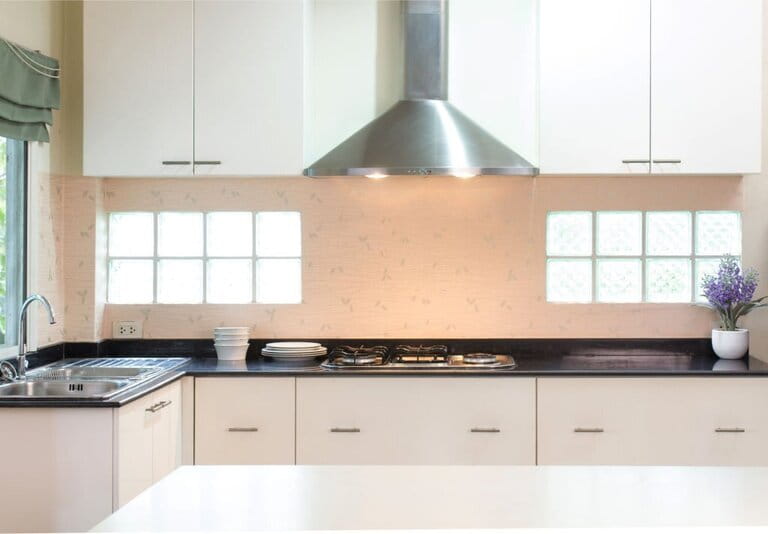A kitchen chimney, also known as a range hood or exhaust hood, is a vital appliance in modern kitchens. It helps remove smoke, grease, odors, and airborne particles produced during cooking, ensuring a clean and odor-free kitchen environment. If you're planning to install a kitchen chimney in your home, you've made a wise decision for your kitchen's hygiene and overall comfort. This comprehensive guide will walk you through the step-by-step process of installing a kitchen chimney in your home, whether you're replacing an old one or setting up a new unit.
Tools and Materials You'll Need
Before you begin, gather the necessary tools and materials to ensure a smooth installation process. Here's a list of what you'll need:
Tools:
- Screwdriver
- Drill and drill bits
- Tape measure
- Level
- Pencil or marker
- Adjustable wrench
- Stud finder (optional)
- Ladder or step stool (depending on the height of your kitchen)
Materials:
- Kitchen chimney unit
- Chimney duct or pipe
- Screws and wall plugs
- Electric wire and plug (if not pre-attached)
- Circuit tester
- Duct tape
- Chimney cover or cap (if not included)
- Safety goggles and gloves

How to Install a Kitchen Chimney at Home: A Step-by-Step Guide
Step 1: Choose the Installation Location
Selecting the right location for your kitchen chimney is crucial. It should be placed directly above your cooking area to effectively capture and remove smoke and odors. Ideally, it should be centered over the stove or cooktop. Measure and mark the installation point with a pencil or marker.

Step 2: Check for an Electrical Outlet
Ensure that there's an electrical outlet nearby for the chimney's power supply. If not, you'll need to hire an electrician to install one. Make sure the outlet is compatible with the chimney's power requirements and has a ground connection.
Step 3: Locate and Mark the Wall Studs
Use a stud finder to locate and mark the wall studs in the installation area. If you don't have a stud finder, you can often find studs by tapping the wall lightly and listening for differences in sound. Studs are typically spaced either 16 or 24 inches apart. Mark the locations of the studs on the wall.
Step 4: Assemble the Chimney Unit
Follow the manufacturer's instructions to assemble the kitchen chimney unit. This may involve attaching the chimney's different components, such as the hood and duct connectors. Refer to the user manual for specific assembly guidelines.

Step 5: Position and Secure the Wall Mounting Plate
Position the wall mounting plate on the wall, aligning it with the marked installation point. Ensure that the plate is level using a bubble level. Mark the screw holes on the wall through the mounting plate holes. Remove the plate and drill pilot holes at the marked points.
Step 6: Attach the Wall Mounting Plate
Reposition the wall mounting plate and secure it to the wall using screws and wall plugs. Ensure that it is firmly attached and level.

Step 7: Install the Duct or Pipe
Connect the chimney duct or pipe to the kitchen chimney's exhaust outlet. The duct should extend from the chimney to the exterior of your home. It's essential to create an airtight connection to prevent any smoke or odors from escaping into the kitchen.
Step 8: Mount the Chimney Unit
Lift the assembled chimney unit and hook it onto the wall mounting plate. Most chimney units come with hooks or brackets designed for easy installation. Double-check that the unit is level and securely attached.

Step 9: Secure the Duct
Fasten the duct or pipe to the wall using clamps or brackets. Ensure that it is properly aligned and securely attached to both the chimney and the wall.
Step 10: Electrical Connection
If the kitchen chimney does not come with a pre-attached electric wire and plug, you'll need to connect it to the nearby electrical outlet. If you're not confident in your electrical skills, it's best to hire a licensed electrician for this step. Use a circuit tester to confirm that the electrical connection is safe and functional.
Step 11: Test the Chimney
Before using your kitchen chimney regularly, perform a test run. Turn it on to check if it's functioning correctly. Ensure that the exhaust air is being expelled outside and not recirculated back into the kitchen.
Step 12: Install the Chimney Cover or Cap
If your kitchen chimney does not have a built-in cover or cap, you should install one to prevent rain, debris, and birds from entering the chimney duct. Make sure the cover is secure and allows for proper ventilation.

Step 13: Final Checks
Once everything is in place, perform a final inspection:
- Check for any loose screws or connections.
- Ensure that the chimney is level and securely mounted.
- Confirm that the duct is properly sealed and connected to the chimney and the exterior exhaust point.
- Test the chimney once more to make sure it's functioning correctly.
Conclusion
Installing a kitchen chimney at home is a rewarding DIY project that enhances your kitchen's functionality and cleanliness. By carefully following the steps outlined in this guide and adhering to the manufacturer's instructions, you can enjoy a well-ventilated kitchen and a more pleasant cooking experience. If you're not comfortable with any aspect of the installation, it's always advisable to seek professional assistance, especially for electrical work. With your new kitchen chimney in place, you'll be able to cook and dine in a fresher, more comfortable environment, free from the hassles of smoke and odors.













